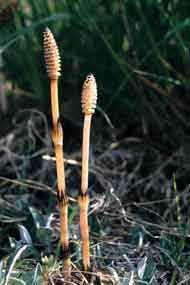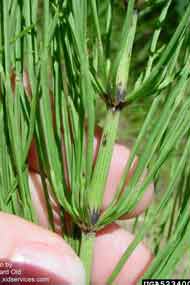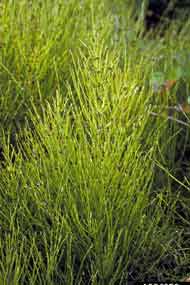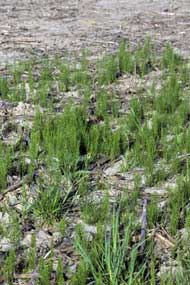Field Horsetail—Equisetum arvense
A persistent weed in cultivated land, pastures and roadsides. It is also called scouring rush—it has a high silica content in its leaves, which makes it useful to scour pans. Once established it is very difficult to eradicate. It can be poisonous to animals, causing illness.

Pale brown, slender, jointed fertile shoots appear in the spring and grow 4 to 30 inches tall. They produce spores on a 1 to 4 inch pinecone-like fruiting head.

Green, segmented sterile stems appear later. These stems have whorls of pine-needle-like branches and resemble a bottle-brush. They grow 4 to 30 inches tall.
Click on images to view full-size
Identification and Control Information
- Controlling Horsetail (PDF) —Gardens West magazine, April 2004
- Integrated Pest Management Prescription for Horsetail–Scouring Rush including Description and Control Options (PDF)—Thurston County, Washington
- Field Horsetail and Related Species (PDF) —L.C. Burrill and R. Parker, A Pacific Northwest Extension Publication
- Fact Sheet with Interesting Information (PDF) —Purdue Extension Weed Science
[Photos, left to right: Gil Wojciech, Polish Forest Research Institute, Bugwood.org; Richard Old, XID Services, Inc., Bugwood.org; John Cardina, The Ohio State University, Bugwood.org; Ohio State Weed Lab Archive, The Ohio State University, Bugwood.org]

